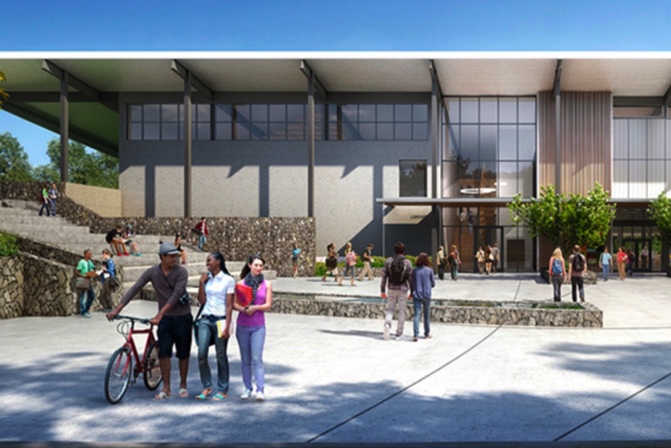Kihei High: How will students at the new Kihei High School – now named Kulanihakoʻi – cross Piʻilani Highway to get to the campus? Until last year, the Department of Education maintained that it did not need to comply with a condition of the state Land Use Commission and Maui County that pedestrian access be via a grade-separated crossing, built before the school opens.
Last year, the LUC rejected that interpretation of the condition, in place since 2013. So now the Department of Education has retained two consultants to advise it on pedestrian crossing options: Group 70 to prepare a “pedestrian crossing alternatives study” and Skog Rasmussen for community outreach.
In early August, two “talk story” sessions were held with the community. Although the DOE says that the high school will open to students in January 2023, the presentation to the community states that it will take from three to six years to design and build a grade-separated crossing.
Those attending the sessions were asked, “Until a long-term crossing solution is found, what do you recommend for a temporary solution?” They were also asked to complete the sentence, “I can support the school opening before a grade-separated pedestrian crossing is built if…” – yet another indication that the DOE and its consultants hope to open the school before a grade-separated crossing is completed.
Mike Moran of the Kihei Community Association wrote that the consultants asked the audience “to come up with suggestions for how the DOE can again avoid the condition and open the school without providing a safe [crossing]… They expressed that it would be OK to force the kids to cross the highway while there are not that many of them. Are a few accidents and injuries OK, as opposed to a larger number? The purpose of the [grade-separated crossing] is to avoid all accidents and injuries.”
Seawall Settlement: On August 22, a trial was set to begin in a lawsuit brought by James and Denise O’Shea against their former neighbor Rupert Oberlohr, who they claim caused the failure of a seawall that protected both of their beachfront properties.
The failure of that seawall in 2017 led the O’Sheas to build a new one without any state or county approvals. The state sought to have the seawall removed. The O’Shea’s fought in the state Environmental Court to keep it. Settlement terms recently worked out by attorneys for the state and the O’Sheas await final approval by the Board of Land and Natural Resources and the Department of the Attorney General.
Oberlohr’s attorneys also sought to avoid going to trial, filing a confidential settlement offer on August 12. On August 22, attorneys for the O’Sheas and Oberlohr put the terms of the settlement on the record. Oberlohr’s attorney Wesley Ching was to forward the settlement documents to the O’Sheas’ attorneys by August 31.


Leave a Reply